Thermoforming skates
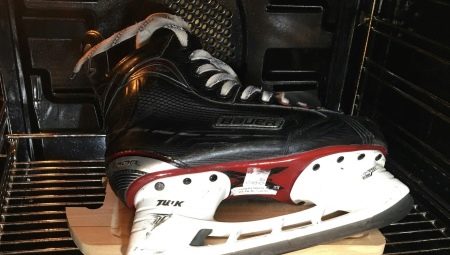
Hockey professionals, figure skating professionals, and casual amateurs know that skates don't always have a shape that fits the foot. This contributes to the compression of joints, rapid freezing of the limbs, poor controllability. These problems can be solved using a special technology - thermoforming. With its help, the boot takes a shape that is as close to the anatomical as possible and becomes comfortable to use.
What is it and why is it needed?
Skates, especially professional ones, are made of hard materials. They can squeeze the leg even with the correct size. That is why a special thermoforming of skates was developed.
The technology allows you to soften the composite material from the outside and from the inside, giving the shoe a shape that is as close as possible to the anatomical... Molding works are carried out in special furnaces at temperatures around 92-94 ° C.
The result directly depends on the design of the skates and the material of their production. Coarser boots are more difficult to mold. You can only slightly change their shape. But less rigid ones become flexible and bend easily. Thus, you can almost exactly repeat the contour of the foot.

It is important to take into account that thermoforming improves the performance of a boot that initially sat comfortably on the foot. Serious flaws cannot be changed. Thermoforming only helps to reduce the inconvenience of riding, minimizing the free space inside the skate, ensuring perfect handling.
If, when trying on, hard walls press on the foot or fix it unreliably, even the strongest thermoforming will not help.The boot should be as close to the anatomical features as possible.

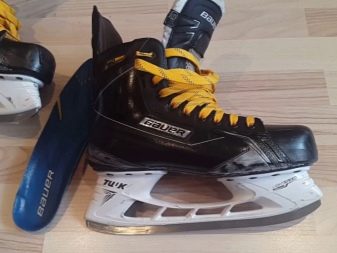
It is also important to remember about changing the size of the ridge during thermoforming. The fact is that the heel has a foam seal. And after heating, it becomes elastic, squeezed under the foot. Thus, it is possible to achieve an increase in the size of the boot up to 0.5 sizes. Therefore, if the fingers in the skates are slightly tightened, you should not immediately take the larger size. Most often, after the boot is molded, it fits perfectly on the foot.
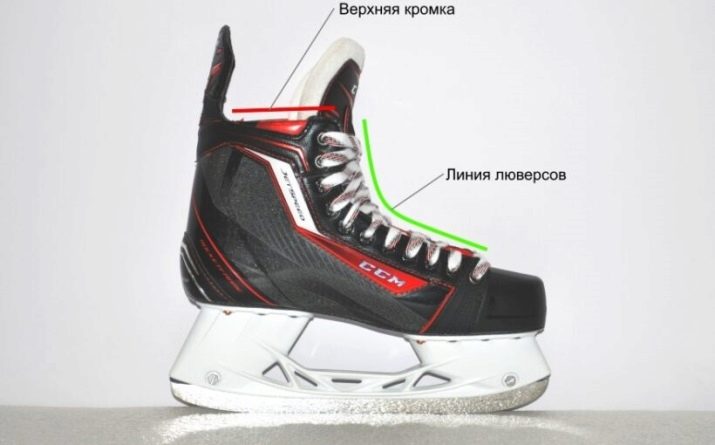
When buying figure or ice hockey skates you should immediately think about improving their convenience... In addition, molding is often immediately included in the price. The technology will make the boot more comfortable. The legs will not get very tired, freeze, and the walls of the skates will not squeeze the blood vessels. Thermoforming will allow you to quickly adapt to the new model and improve handling.
Some people prefer to wait for the moment when the skates are "blown". But at the same time, you will have to endure discomfort for a long time. One has only to thermoform once, and the operation will become much more pleasant.
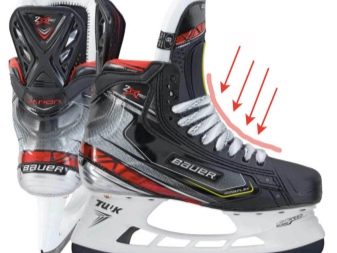
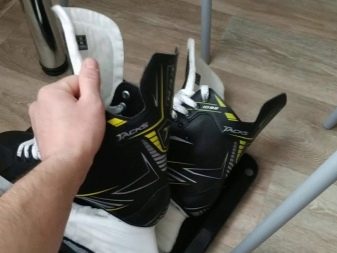
Forming varieties
The technology consists in heating the composite material of the ridge at an average temperature of 92-94 ° C. It can be of two types, differing in the heating area.
Complete thermoforming
This technology is most often used for expensive models. A special designation is indicated on the label. Therefore, a complete adaptation of the boot to the foot can be carried out. In this case, depending on the stiffness of the material, the level of forming may vary.
The technology allows you to change not only the lower part of the skate, but also the walls, padding, insoles. However, additional elements rarely change.
Partial thermoforming
With this technology, only the part of the boot adjacent to the foot changes, and without the foot area. This improves the fit of the foot and ankle and the level of riding comfort. Some professional models immediately have the function of taking the shape of the leg.
If the boot fits perfectly on the foot, except for a small area, then you can change that too. A specific place is heated with hot air.
How to do it at home?
You can also thermoform skates at home with your own hands. But first you need to study the appropriate instructions. You can find it in a skate box or on the manufacturer's website.
Most often, molding is carried out in the oven. At the same time, it must maintain convection of hot air in the isolated operation mode. The process must be carried out with special care, because there is a risk of damaging the skates.
One of the disadvantages of this treatment is the low capacity of the oven. The boots will have to be folded one at a time.

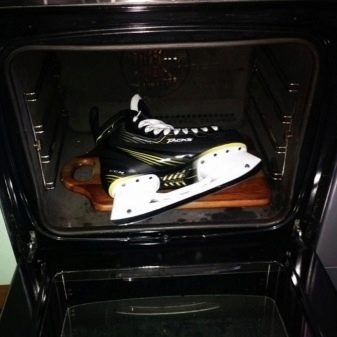
Before shaping, you should prepare:
- Free the oven from all elements which can interfere with the process. Only the grate is left, on which the boots are later put.
- The insoles must be in the boot during heating. However, silicone should not be left in skates.
- The laces on the boots should be loosened. However, if the products are additionally processed or purchased from outside the manufacturer, they should be removed.
- It is worth choosing a place in advance where the skates will cool down, and choose socks that are close in thickness to those that will be used during training.
- The oven temperature is set strictly in accordance with the manufacturer's recommendations.... It is individual for different models.
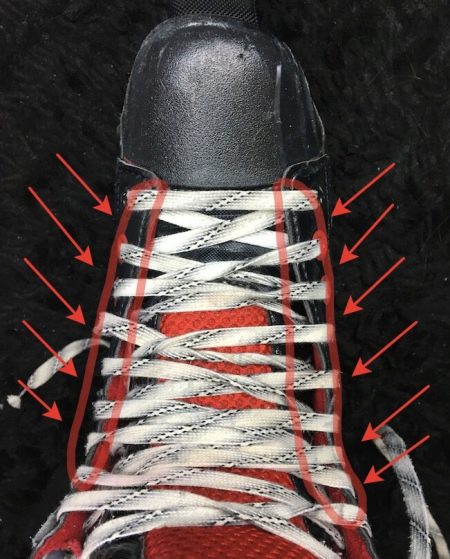
Thermoforming takes place as follows:
- The skates should be installed in the oven after reaching the desired temperature, in a horizontal position. The body must not come into contact with oven elements that could melt it.
- Place skates in the oven quicklyso that the hot air does not have time to escape.
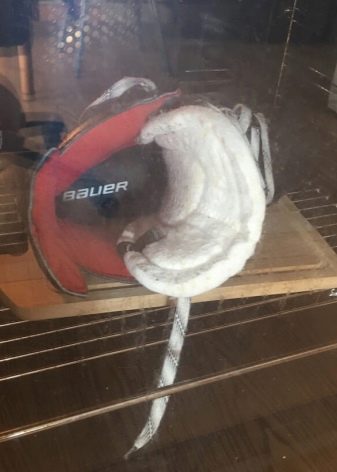
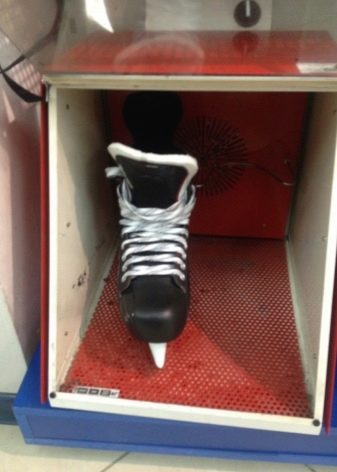
The heating process must take place exactly with the time specified by the manufacturer. Some firms deliberately underestimate the molding time in order to preserve the integrity of the boots.You can check the plasticity by pressing on the hardest part of the ridge.
The heated product is pulled out of the oven, immediately immersing the second. You should be careful with metal parts so as not to burn yourself. Special pliers or tongs can be used.


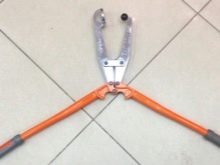
Heated boots are lacing in several stages. For the first time, the laces are tightened neatly, do not pull up. Otherwise, the eyelets may be damaged. Squeeze the foam on the heel before the main lacing. Further, the laces are neatly pulled up, and at the same time they must be held at the base.
Most often, the cooling process takes place in a sitting position, with the leg bent at 90 °. For some models, it is necessary to stand in order to more accurately convey the shape of the foot. Formation comes from the weight of the person. Cooling down occurs within 15 minutes, and you need to stand still and still.
To check if your skates are cold, you need to touch the heel area. It should be cold. You can use the shoes only after they have completely solidified. For some models, the time does not exceed one hour, while for others it can be up to 24 hours.
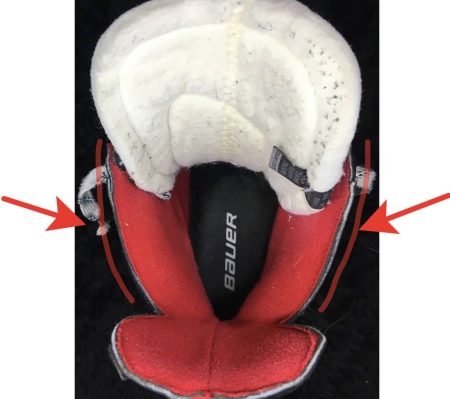
You can also thermoform with a special building hairdryer. You can set the required temperature on it. Many consider this option preferable, because only the insides of the boot heat up. This does not damage the outer layer.
The cooling process is identical to the oven version.
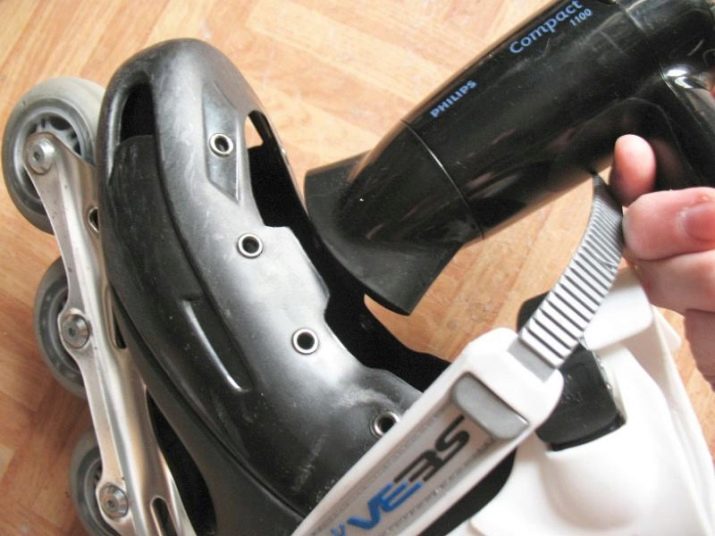
Thermoforming allows skates to be adapted to the individual anatomical shape of the foot... It is simply irreplaceable for professional hockey players and skaters. But ordinary amateurs can also make the ride more comfortable by molding at home.
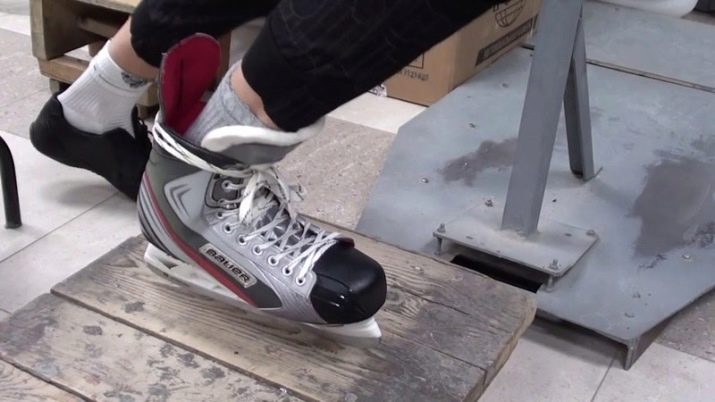
For a visual perception of the process of thermoforming skates, it is worth watching the following video.








